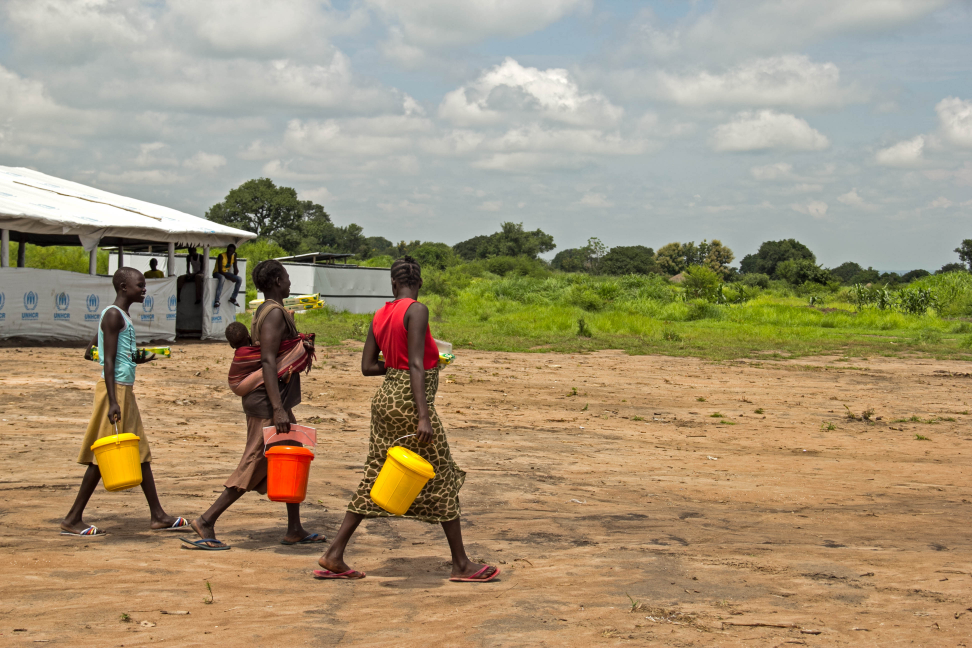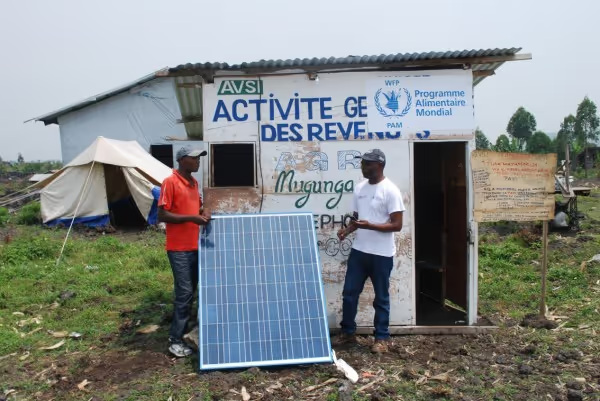The number you have dialled cannot be reached…please try again!

In February 2014, we completed our first mobile phone survey round in the Democratic Republic of Congo. We’ve learned a lot and have a long list of insights to share with you. For now, we will tell you about the process of running our first phone surveys with displaced people living in Mugunga 3 camp.
Keeping the phones charged up in a camp
When we started our test calls, we realized that we were having trouble getting through to some people. When our team visited the camp to find out why, access to electricity was the main problem. Many people keep their phones switched off to preserve battery life. That explained why we were not always able to get through. A focus group discussion in the camp showed that phone charging in the camp cost 200 CDF (0.2 USD), compared to 150 CDF outside the camp in Mugunga. Many camp residents are too poor to pay to charging their phones, let alone at high prices. We therefore had to ensure access to phone charging services if we expected people to answer our calls. After discussions, it was agreed that setting up a small solar charging station in a central location would be the most economical, convenient and sustainable option.
In a matter of days, WFP Goma set up the solar charging station, in collaboration with the camp’s income generating activity management committee. People can charge their WFP issued phones there for free on Mondays, Tuesdays and Wednesdays.

The newly established charging station was operating very well until – maybe due to too much excitement and over-loading – the converter conked out. It is now being repaired in a local shop and we hope the charging station will soon be back in action.

In addition to setting up the charging station, a committee was elected among the phone survey respondents. It is composed of 7 members, including 4 women. The purpose of the group is to manage matters related to the phones, such as charging issues, and when needed, bring them to the attention of the camp management or the mVAM team. We’re excited to see the respondents taking initiative in forming the committee; its existence should help the mVAM team in Goma stay in touch with the population and resolve some of the other issues that came to light during the monitoring visits, which include a few cases of locked phones, swapped SIM cards, lost or re-sold phones. To keep response rates up, we’re also providing a 500 CDF (USD 0.50) airtime incentive credit for each complete questionnaire. When the incentives were paid the first time, our operators began receiving a steady flow calls from thankful survey respondents. We expect that the provision of charging services and of an airtime incentive will help us stay in touch with the people in the camp.
Getting people to answer the phone when we call
At the time our face-to-face baseline survey in Mugunga 3 in November 2013, 90% of the interviewees ‘opted in’, and agreed to be contacted by phone in the future. During our test calls in January, we had a 40% response rate, in February, a 45% response rate. The challenge is reaching people, rather than signing them up for the surveys in the first place.
Interestingly, our experience has some similarity with Listening to LAC, the phone survey project implemented in Latin America, which also involved a face-to-face survey, phone distribution and follow up calls. In their experience in Peru in 2012, Listening to LAC also had a 90% ‘opt-in’ rate, but achieved a 51% response rate to their live calls. We seem to be mirroring that experience, in a starkly different setting. As our initial 45% response rates in eastern DR Congo are not far from that benchmark, we believe we’re on the right track. Considering the high vulnerability of the population we’re working with, obtaining such response rates is encouraging. However we also know that phone surveys run in other contexts in Africa have achieved response rates in the 60%-70% range; we also have some scope for improvement. We will keep an eye on response rates as calls continue.
We plan to try out different ways of assessing whether the very poorest households in the camp were able to respond to our surveys, so stay tuned.
Stay updated
Sign up for our newsletter to receive regular updates on resources, news, and insights like this. Don’t miss out on important information that can help you stay informed and engaged.
Related articles
.png)


Explore Elrha
Learn more about our mission, the organisations we support, and the resources we provide to drive research and innovation in humanitarian response.